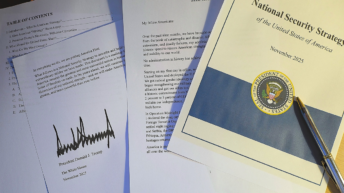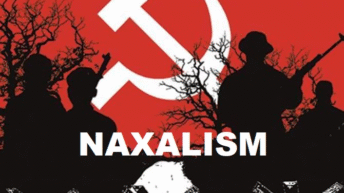
The Shanghai Cooperation Organization’s 25th anniversary summit comes at a time of deep recalibration in the global order. For Asia, the SCO is no longer a mere security forum; it has evolved into a stage where the contradictions of geopolitics, economics and energy converge. For India, the question is existential: will it remain a dispensable pawn in Washington’s larger contest with China and Russia, or position itself as a pivotal state bridging U.S.-anchored markets with Eurasian supply chains?
China at the Center, Contradictions All Around
China is undeniably the centerpiece of this recalibration while simultaneously being the driver of Eurasian integrationthrough BRICS and SCO and the source of sharp contradictions within both. Its embrace of Pakistan as its “iron brother” sets a hard ceiling on India’s strategic maneuverability, while territorial disputes and competition in Asia cast a permanentshadow over India-China ties. Japan, too, finds itself pulled in opposite directions: security reliance on the U.S. but deep economic interdependence with China. The SCO thus represents both a promise of multipolarity and a theater of contradictions.
Russia: The Weakened but Indispensable Player
For Russia, the SCO and BRICS are strategic lifelines. Sanctions have tethered Moscow closer to Beijing, but forums like the SCO provide legitimacy and a platform to resist U.S. dominance.
Yet, Russia’s weakened position means it is now a junior partner to China, not the co-equal it once aspired to be. Here, India’s growing role within the SCO becomes critical for Moscow: by backing New Delhi’s deeper participation, Russia can offset Beijing’s overreach and inject a measure of balance into an organization at risk of becoming China-centric. ForMoscow, India is both counterweight and indispensable bridge.
Trump’s Tariff Shock: A Catalyst for Eurasian Realignment
The wild card remains Washington. Trump’s tariffs have become a key instrument of statecraft, injecting volatility intoglobal trade. What was once a dispute over deficits has morphed into an assertion of raw power while signaling allies and adversaries alike that access to U.S. markets can no longer be taken for granted. The consequence may be a deepening of Eurasian realignment, as countries from India to Turkey and Central Asia hedge their bets.
India’s Energy and Economic Resilience Under Strain
India’s energy and economic resilience are both on the line. Discounted Russian crude delivered up to $17 billion in savings, but export losses from U.S. 25%+25% tariffs threaten to wipe that cushion away and far beyond. India’sMSME sector contributes around 30% of GDP and over 45% of total exports, while employing over 60% of the workforce. The knock-on effect is immediate: job losses, credit freezes, SMEs scaling back operations and wider risks to growth and export competitiveness. According to recent reporting, over 50,000 small exporters are already scrambling toreroute shipments or find new markets, amid tightening credit conditions.
As tariff-driven losses mount, the political fallout will be felt in voter sentiment, especially in export-reliant states andamong urban middle-class consumers facing inflationary pressures. In a democracy of India’s scale, external economicshocks are never just about trade, they ripple into electoral dynamics, coalition stability and the political economy of reform.
India’s response must be multi-pronged: diversify energy sources, build stronger strategic reserves, negotiate safeguards or carve-outs with Washington to protect vulnerable export sectors. Simultaneously, support MSMEs with creditguarantees, export facilitation and market diversification, so that the tariff squeeze does not translate into massive unemployment and growth setbacks.
India–Japan: The Middle Power Axis
Amid these contradictions, Prime Minister Modi’s recent visit to Japan is a significant counterbalance to the SCO’s China-centric tilt. Tokyo and New Delhi, despite different alignments, share a core interest in preserving open sea lanes, resilientsupply chains and an Asia not dominated by any single power. Japan, heavily dependent on both U.S. security guarantees and Chinese trade, sees India as an indispensable partner in creating strategic depth.
The outcomes of Modi’s visit were deepening defense technology cooperation, expanding semiconductor and critical minerals supply chains and accelerating joint infrastructure projects are all strategic signal that Indo-Japan ties arestrengthening further substantially. For India, this partnership strengthens its ability to act as a pivotal state: a bridge between U.S.-anchored markets and Eurasian corridors, while also crafting an independent Asian pole alongside Japan.
In effect, India and Japan are emerging as hinges of Asia’s multipolar balance. Both are middle powers capable of shaping the region’s architecture if they institutionalize cooperation across energy, technology and defense. Together, they provide a democratic, rules-based alternative to China’s hierarchical vision of Eurasian integration.
Washington’s Strategic Blind Spot
For the United States, the opportunity is to reassert leadership by restoring predictability: anchoring Asia through securityguarantees while offering market and technology access. Yet the short-term weaponization of tariffs undermines those very objectives. By treating partners like India as expendable in its contest with China, Washington risks nudging them deeper into Eurasian forums it once sought to marginalize. If the U.S. fails to recognize the structural costs of this approach, it may find its long-term strategic influence in Asia irreparably weakened.
The Geopolitical Reset Ahead
The SCO’s 25th anniversary is more than a ceremonial milestone. It marks the accelerating drift toward a non-Westernbloc, where Eurasian powers seek insulation from U.S. economic coercion and dollar dominance. For Asia, the recalibration opens both opportunities and dangers: new trade corridors, energy routes and financial mechanisms on oneside; sharper security rivalries on the other.
For India, it is the ultimate test of statecraft, whether it can rise as a stabilizing power in a fractured world order or remain constrained by the weight of contradictions. Modi’s Japan visit provides one pathway: with Tokyo as a partner, New Delhican avoid being cornered and instead shape the architecture of Asia’s future. Simultaneously, tentative thawing in India–China relations and a greater role for New Delhi within the SCO open a parallel track where India is not merely reacting to Chinese dominance but actively shaping Eurasia’s multilateral forums.
Together, these avenues give India the leverage to transcend its contradictions and act as a true pivotal state in Asia’s unfolding recalibration.






Add comment